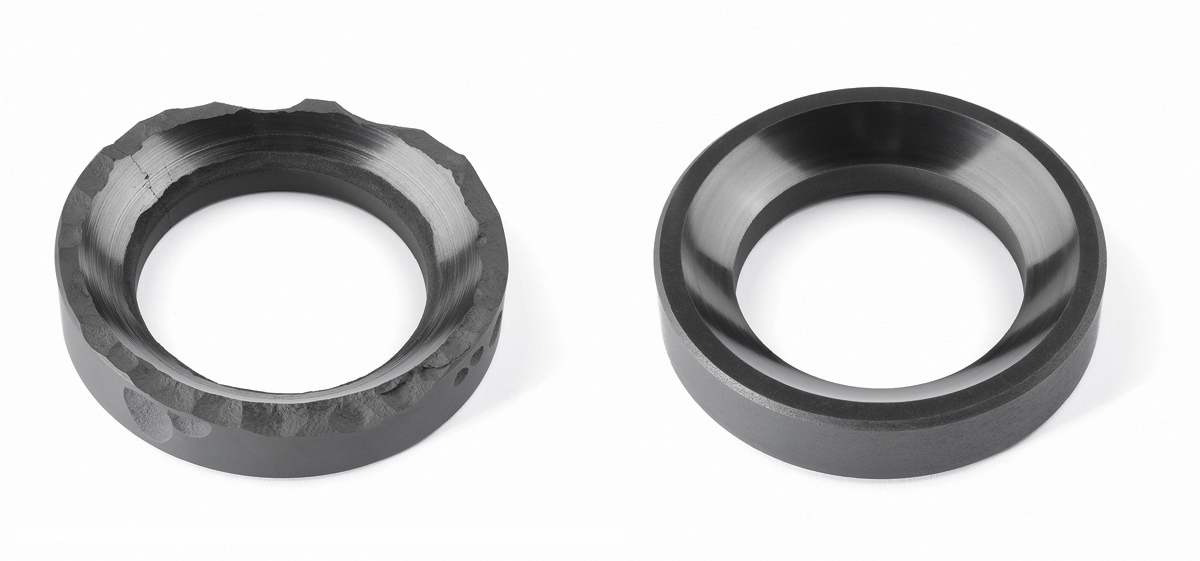Why is it important to use OEM genuine parts?
The seal rings below look the same. I can get the one on the left for 50% less than one on the right. Why would I go with the more expensive option?

This is a common question asked by maintenance managers, production supervisors, and purchasing agents. The answer is straight forward: The one on the left is a non-genuine OEM part and failed catastrophically while in service.

Operational efficiency and safety are compromised when process machinery equipment is not properly maintained with OEM genuine repair parts. Using genuine parts is the only way to ensure the highest product quality and integrity is maintained. It is also the only way to ensure you have the latest design and material specs for the product.
The life-cycle cost of parts from third-party companies making copy machine parts is invariably much higher when knock-offs are made to a different quality standard. The initial purchase cost can often be higher as well when parts do not fit correctly or need to be re-machined to fit the current geometry of the mating component. What is commonly overlooked when making the decision to purchase lower cost, non-OEM parts are the following:
- Knock-off parts result in higher overall servicing cost when these parts wear out faster.
- The inferior quality of counterfeit parts results in more frequent repairs and higher costs.
- Counterfeit sealing components can cause serious damage to rotary pressure joints and pose an increased threat to safety.
Most importantly, using OEM genuine parts reassures safety of your employees. Extensive research, time, and money are invested in developing OEM products to ensure that the highest standards of safety and performance are met. When using knock-off parts, there is no guarantee these components meet the OEM standards. They are not subjected to the OEM quality requirements or design standard, and are often made from inferior materials which many times leads to the lower initial cost. This can affect the function and safety of the product, which can lead to premature wear, damage to equipment, and even accidents, putting operators at a considerable safety risk.
